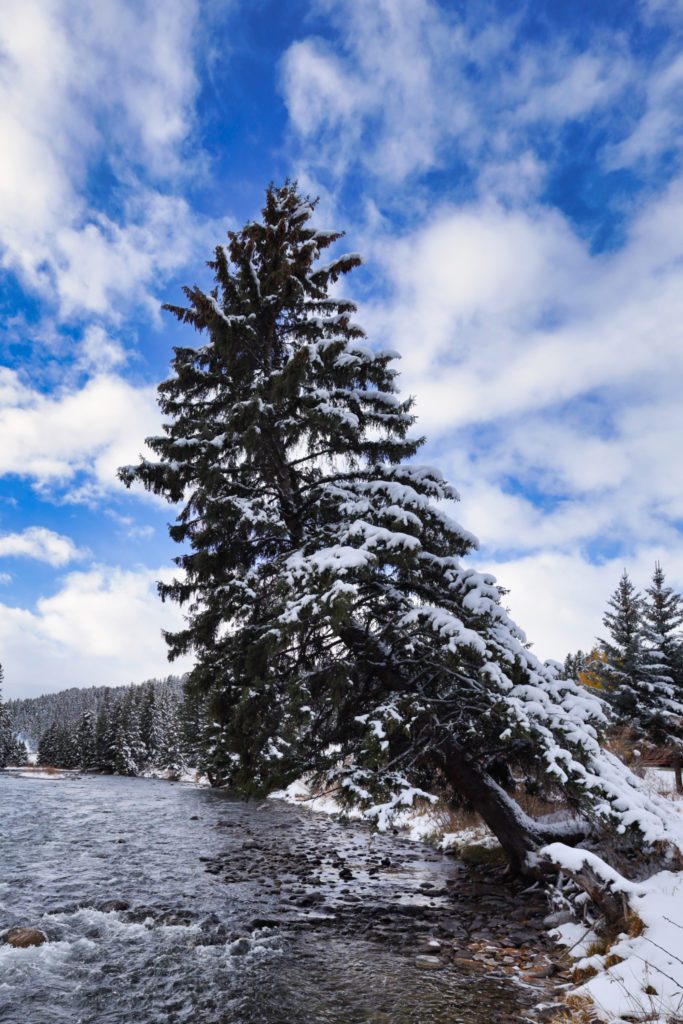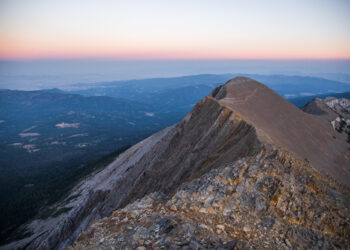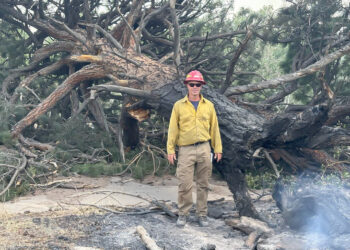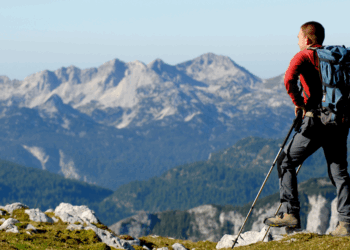By Paul Swenson EBS COLUMNIST

Time to us human beings is a strange concept. You sit in a boring meeting, or wait for ski season, or go to a gathering where you don’t know anyone, and it seems like time slows down to a crawl. On the other hand, you go on a trip of a lifetime, have an epic powder day, or just met the love of your life, and time passes quickly, so fast that as your youngest is leaving for college you look in the mirror and say, “That was fast.” Our standards for time are a lifetime, a decade, a year, or a day.
But for geologists a human lifetime is just an instant, just one tick on the clock of the universe. Geologists need to understand the time scale of the Earth, from when it coalesced out of a molecular cloud with the rest of the Solar System to all the subsequent events since then that shape the planet around us. This perspective of immense time leads one to notice subtleties in the landscape that are caused by very slow changes.
An example of this is related to the last column on hummocky topography and landslides. We think of landslides as being a rapid, one-time event that takes a few minutes, then stops and that’s the end of the story. This of course is not true. An example of this can be seen in the following picture is the toe of a landslide across U.S. Highway 191 from the 320 Guest Ranch. The yellow aspen trees delineate the top and toe of the slide.

But the question I pose is, “Is it done moving or not? And if not, how does one tell?”
The answer in this case comes from the trees growing on the slide. If the ground is still shifting, albeit slowly, the orientation of the tree’s trunks should also shift. So what we need to look for are trees that are not growing vertically, have random orientations, or have a structure called a “J-shaped” trunk, see the next photo.

There are many reasons for tree trunks to become “J-shaped” but around the Big Sky region slow movement of the landscape, or creep, is a major cause. Creep can be shallow with only the top several feet of the soil column moving slowly down a hill, especially when it is saturated with water, or much thicker as seen on the toe of the landslide pictured above. As the landscape surface slowly moves, the deeper roots of the tree stay “rooted” and the shallower roots get pulled along, causing the tree to tip. So why the “J?”

Due to a process called geotropism, plant stalks and trunks grow vertically against the direction of the Earth’s gravitational field, and the roots grow vertically downward with in the direction gravity. Therefore, if a tree or plant is tipped away from vertical, the plant will change the shape of new growth to approach vertical.
But how does a plant know “up?” Plants produce a growth hormone called Auxin, usually in the newer shoots and tips of branches. This molecule is carried to other parts of the tree in a vascular transport system called the Pholem. In the fluids of this system the Auxin molecule is ten times more massive than a water molecule. This mass is key. If the plant stem or trunk is growing vertically there is a symmetric distribution of the Auxin around the trunk so all the cells in the trunk grow at approximately the same rate.
But if the trunk is tipped, the weight of the Auxin molecule causes a greater concentration of it on the bottom side of the stem. Auxin being the growth hormone then causes the cells of the stem or trunk to elongate more on the bottom than the top. This differential in cell growth causes the upward curvature of the trunk.
A similar effect is seen in the roots of a plant, only here the Auxin causes the opposite cell growth than in the stem, a higher concentration lessens the elongation of the cell’s growth thereby causing the root to grow downward.
There are a number of other “tropisms” that plants display, but I will leave those for next summer when plants are in the height of their growing season and you can observe some of this behavior on a daily basis.
So for now as you go out hiking the last few weeks of hiking weather, or start skiing into the backcountry, see if you can spot creeping hill sides given away by “J”-trunked trees.














